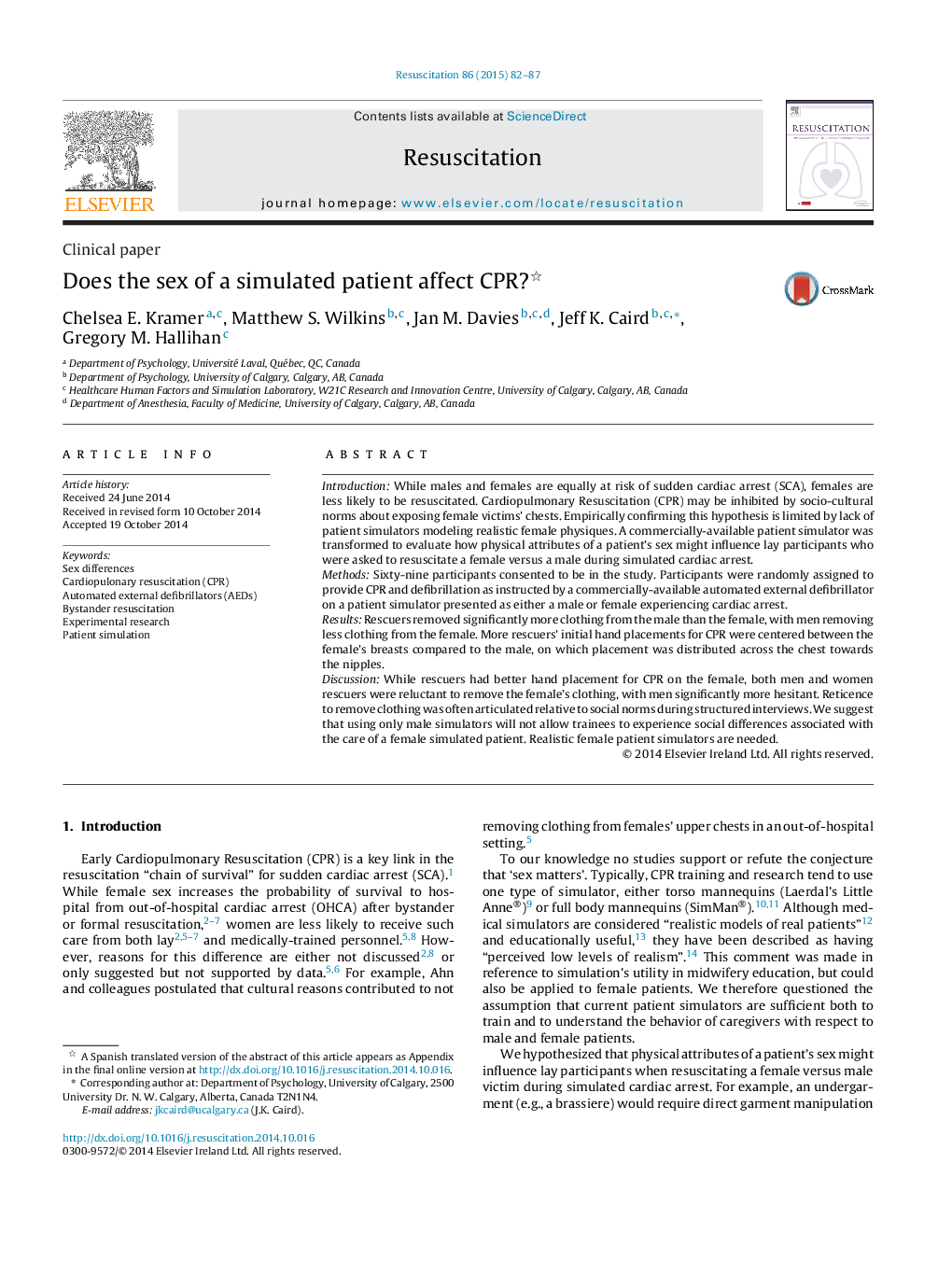| Article ID | Journal | Published Year | Pages | File Type |
|---|---|---|---|---|
| 5998073 | Resuscitation | 2015 | 6 Pages |
IntroductionWhile males and females are equally at risk of sudden cardiac arrest (SCA), females are less likely to be resuscitated. Cardiopulmonary Resuscitation (CPR) may be inhibited by socio-cultural norms about exposing female victims' chests. Empirically confirming this hypothesis is limited by lack of patient simulators modeling realistic female physiques. A commercially-available patient simulator was transformed to evaluate how physical attributes of a patient's sex might influence lay participants who were asked to resuscitate a female versus a male during simulated cardiac arrest.MethodsSixty-nine participants consented to be in the study. Participants were randomly assigned to provide CPR and defibrillation as instructed by a commercially-available automated external defibrillator on a patient simulator presented as either a male or female experiencing cardiac arrest.ResultsRescuers removed significantly more clothing from the male than the female, with men removing less clothing from the female. More rescuers' initial hand placements for CPR were centered between the female's breasts compared to the male, on which placement was distributed across the chest towards the nipples.DiscussionWhile rescuers had better hand placement for CPR on the female, both men and women rescuers were reluctant to remove the female's clothing, with men significantly more hesitant. Reticence to remove clothing was often articulated relative to social norms during structured interviews. We suggest that using only male simulators will not allow trainees to experience social differences associated with the care of a female simulated patient. Realistic female patient simulators are needed.
